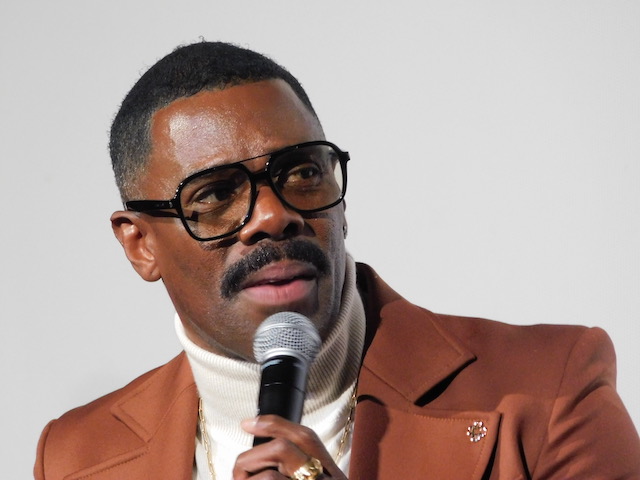
Rustin : The architect of 1963’s momentous March on Washington, Bayard Rustin was one of the greatest activists and organizers the world has ever known. He challenged authority, never apologized for who he was, what he believed, or who he desired. And he did not back down. He made history, and in turn, he was forgotten. Directed by DGA Award and five-time Tony Award winner George C. Wolfe and starring Emmy Award winner Colman Domingo, Rustin shines a long overdue spotlight on the extraordinary man who, alongside giants like the Reverend Martin Luther King Jr., Adam Clayton Powell Jr., and Ella Baker, dared to imagine a different world, and inspired a movement in a march toward freedom.
Rating: PG-13 (Some Violence|Racial Slurs|Thematic Material|Language|Brief Drug Use|Sexual Material|Smoking)
Genre: Drama, Biography, History
Original Language: English
Director: George C. Wolfe
Producer: Bruce Cohen, Tonia Davis, Priya Swaminathan
Writer: Julian Breece, Dustin Lance Black
Release Date (Theaters): Limited
Release Date (Streaming):
Runtime:
Distributor: Netflix
Production Co: Higher Ground Productions

Q&A with Colman Domingo, Aml Ameen, Glynn Turman, Michael Potts, Gus Halper
Q: Colman, let’s start with you. talk a bit about these four beautiful men here, maybe even one at a time. Can you share some thoughts?
Colman Domingo: Before I do that, I want to say it’s so good to be back in NewYork. I have had the privilege of working with these brothers on this film and we put our hearts and souls into it thank you every single one of them and they’re all so very special so I get this beautiful privilege to get to introduce them to you.
Gus Halper: We actually tried to kill each other on an episode of “Fear the Walking Dead” before this. We were cast in this two-hander in season 7. It was crazy, weird and almost sexy in that we were trying to kill each other the whole time. I got to know him as an artist and the way he works and laughs.
It was a beautiful experience and then I thought that was it. Then, six months later Iwas like “I wonder who was going to play Tom?” Then George said, “Oh… a brilliant actor, he’s got a little gap in his teeth and big hair, Gus something.” I said, “There aren’t a lot of Guses out there, are you Gus Halper? [George replied stuttering] I think that’s him. I was like, “Are you kidding me, we tried to kill each other and now I get to make love to him.”
Colman Domingo: Exactly. We just went on this beautiful journey. He’s such a beautiful actor. He’s just open and dazzles with his eyes. He shares a piece of his soul — that’s Gus Halper. I have to welcome these two brothers next to me that have become my brothers. We were in a little film called “Ma Rainey’s Black Bottom.” You know him as Michael Potts and this beautiful legend, Glynn Turman.
We really learned how to dance together in Ma Rainey’s Black Bottom and it became such a brotherhood and friendship and lots of laughter and bringing so much of I don’t know our what we’ve been doing for years together everyone you they left everything out there truly and they’re the most generous actors in humans and so George has sort of formed this company of actors that he wants to work with again and again. I was so blessed that they were going to be my brothers on this journey telling Rustin’s story so I thank you and I admire you and you’re two gentlemen and just brilliant brilliant artists.
Q: When Glynn Turman was 12 years old, he was in the original Broadway production of “raisin in the sun.” you might get to hear him tell stories of that production as we did the other night that was a treat and living history.
Colman Domingo : I want to introduce you to this young man who really has become a brother to me. We had the privilege of working together though we actually didn’t have any scenes together. We really tore up New Orleans and we were in a film called “The Butler.” I played this wild guy who ran the White House Butler staff but he has such a beautiful heart.
I just loved and admired how we were really and we’d talk about this and about how we were really investigating tenderness between these characters. I think there are things that we care about, showing tenderness between black men, how we can be delicate and how we love each other. That was also a challenge to the movement back then as well. Anyway, they wanted to use it against us but he had such a big heart and was such a beautiful multi-hyphenate. The holidays are upon us so he’s got a film called “Boxing Day” that came out last year. It’s a must-watch because it’s really cute. This is Aml Ameen.
Q: What Colman was alluding to is that that wasn’t always one of the primary thrusts of the film but became so — the relationship between Rustin and Martin Luther King. It’s an incredible three act saga that goes from betrayal through friendship, love and redemption. All of it is real. There’s a lot of elements in the story which are exactly how they happen in history. The Bayard Rustin and MLK arc is one of them. One would imagine there could be some baggage associated with being asked to play Martin Luther King Jr. What was that journey like for you?
Aml Ameen : I had no idea who Rustin was when the audition came up. Then I saw Colman Domingo’s name on it. I was like, “Colman’s playing the lead in this?” As Colman said, we’ve known each other for a long time so I was excited to start researching who Rustin was and the relationship between him and Martin Luther King, what that would be like and that he was one of Martin’s heroes.
He took Martin on a journey to nonviolence. It was absurd to me that I just didn’t know that! Then very quickly, as we started working on the piece together, we ended up adding a scene because of that friendship. We went to re-shooting the friendship since it was such a core part of it. It was an honor to find that with Colman and that associate that word ‘friend’ developed such a tenderness. I think because we had known each other for a long time and admired each other for a long time it was an easier transition into establishing that part.
But, to play Martin Luther King, for anybody, is a massive task. I heard murmurs [about my accent]. Yeah I’ve got an accent but I’ve lived in America for 14-15 years. African American culture has been a pillar of inspiration for me. Across the waters, actors like these are the people that have inspired me for many years.
I felt very connected to the stories and information my parents Caribbean Jamaica so you know yo what talk about we can switch it up still but yeah young man but it’s I guess what I want to say that playing Martin Luther King for a person of black British Caribbean culture is an extension of of us you know he’s your favorite. he’s your father to African-American culture. He’s our favorite uncle and I just want to reiterate that it’s an honor and thank you every day that I went on this journey with you.
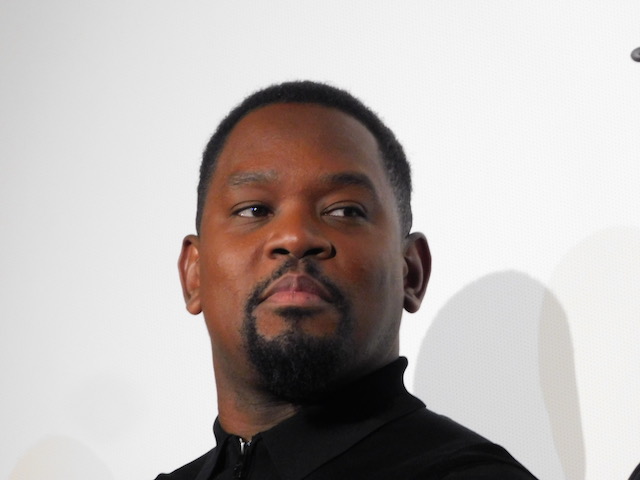
Q: We have an image of who these men are and part of the job of this film was to expand that. How did you dive into these men who were real people and figure out the thing that made them tick that was going to connect us to them in a way that we hadn’t been connected to before?
Gus Halper: I played Tom Kahn who is a real man but I assume unknown. That certainly took some pressure off me although knowing that his loved ones would be watching the film definitely ratchets up the pressure to do his memory justice. First of all, the script by Julian and Dustin that the relationship between Bayard and Tom was so the love that they felt for each other, the romantic and platonic was so vividly drawn throughout the script and that was my entrance into him.
Once I got the role, I started researching and learned a little bit more about his life. He was a speech writer and ghostwriter for all of these guys. He wrote speeches for Bayard and A Philip Randolph; he wrote speeches and worked for the AFL CIO and wrote speeches for the head of the AFL CIO after the Civil Rights Movement. His intellect, passion and heart became so clear through that research and the thing that struck me most about him was how deeply he felt but he never let that feeling get in the way of the work which are the priorities of a true activist. I had an immediate affinity for him which really endeared me to him.
Michael Potts: It always begins with the script first and foremost. That’s what you’re going to be manifesting in the final product. I didn’t know about Mr Robinson before this project and didn’t know about his contributions to the March in 1963 or his contributions in general to the nonviolent social justice struggle.
I began by finding everything I could about this human being. I did everything short of going to dig up the archives of some of his writing. I couldn’t do that but then I began to look at archival photographs and things to get a sense of who this person could be. Then you go from there pretty much; you source as much information as you can. You try to figure out what other people said about him, what he said about himself and that’s it. You build from there and interplay between yourself and everyone else on set. Hopefully you come up with something authentic.
Glynn Turman: What’s important about this is who the hell cares? Did it ever happen? Are these people real? Where do I find anything about any of these people? Is there a place to go? My kids have said to me in the past — what did you do during the Civil Rights era? I said I was blessed to have been a part of some very wonderful projects that reflected the times that we were in. We were into the people so that they would gain knowledge and have some sort of personal connection to what we did.
I was an Artistic Warrior so that when a piece came to me like this from our dear friend George I was able to sharpen my saber and go back to the front lines. If there was no such place to dig up the information, if there was no national museum in Washington DC as the Smithsonian Institute where the life stories of these people are presented in gigantic form and are so available.
If it was wiped out so that the search for who these people were was so difficult, you’d say, “Oh, let me just make something up,” then you’re telling another lie. The fact is we didn’t have to lie about any of these people; the resources were there. We had directors and writers who cared about these people and made the charge a battle worth fighting. And that’s what we did.
Aml Ameen: I sat next to Glynn and just took it all in. That was my process. For me, it started with the voice and how Martin spoke and why he spoke with that musicality, trying to figure out that and his Southern Baptist roots and his Bostonian influences. Then George C. Wolf was very clear that Martin was not yet the icon. He was the man in search of what he would do with his stardom and a lot of that was in the relationship between him and Bayard Rustin and with the rest of everybody else.
It coalesced into the moment of that speech and so a lot of it became about listening. I found that within my experience of Martin, leaning into his energy, especially by talking, [led me] to become a really great listener. That idea — don’t judge by the color of your skin but by the contents of your character — I was like well what does that mean outside of a bumper sticker? What is its true meaning — to me what I found was that it really means delaying judgment of anybody; taking people from moment to moment. That really sunk me into him and the voice. That’s how I experienced playing him — those were my processes.
Colman Domingo: I can talk about the process and about there’s many actors in here and I feel like I don’t want to bore anyone but there’s the details that we all do of finding the voice, finding the language, the pitch, the physicality. They laid out all these things that I Incorporated in my work. I had a good five months to prepare; I worked very rigorously. I really had to put myself through like 40 hours a week in rehearsal to get myself prepared.
I knew the work, the research and the detail had to be there. I knew more than anything is that I had to have a different call on a different part of myself to be a true leader to find that part that was in service not only to the story but to come in and be in service every day to my company and lead the the cast, the crew and be the center of the production. it all flows through Bayard and I had to find the spirit.
I feel like that was the thing for me. I had to divine myself and try to find that thing from God. That ran through all these people, all these characters who devoted their lives to everyone’s civil and human rights. I do many other things in my life but for someone who dedicates themselves to this since they were 15 years old I had to definitely find that Spirit to raise up every day and beyond.
Being on set 14 hours a day, from the top of the day until the end of it; then go home and prepare mind, body and soul to be that light and love, it’s a lot but I knew that these people deserved it. All of these people that we represented deserved it. That was the thing more than anything else in my work that I had to call on.
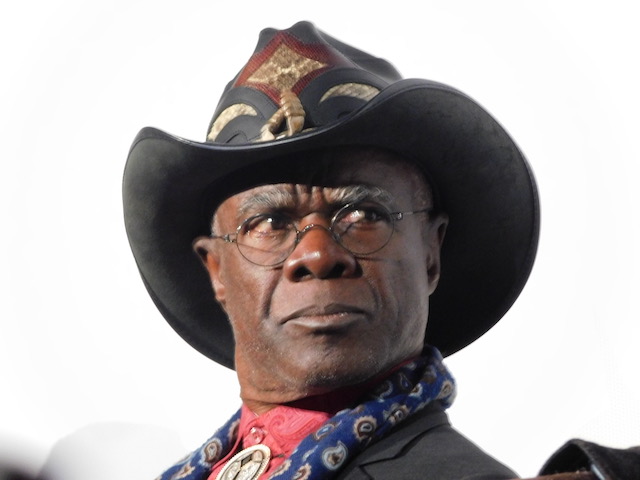
Q: How was the march in Washington recreated? Talk about the many offices there are in this film. It seems silly but it actually does something really interesting performance wise. It throws you all into these tight spaces where you have to get really intimate. It almost feels like a theater stage. You have this singular space and most of the energy is coming off of how you’re playing off of each other.That’s a different energy than when we get to the March on Washington where it’s this open space and it’s part your own work, part archival footage. It almost feels like you’re more together there’s more people but we land on that final moment where he’s alone cleaning trash. Talk about how those office moments let you play with what the team had given you script wise. How did George work with you to really get to the heart of what was at stake for these characters. These people are real people — how did that feel different than filming that March on Washington Monument where the walls aren’t trying to contain your energy.
Colman Domingo: The beautiful thing is in every one of these spaces and I think the film is so clear about what it is about — the spaces. I was basically in all of the spaces, the dark spaces where your body changes the environment. It’s about safety and it’s dangerous so there’s a lot. But in his night space, Bayard lived in the corners of society in the margins, the dark streets — you name it.
Then you come into these offices and have all these people with incredible ideas and ideologies. They’re all wrestling and all are smart. They’re witty and battling it out so it feels like we’re in a boxing ring. Then every so often, like every day, I had a new boxer and I was like “Oh my God, here’s Foreman today.” Y’all didn’t think I had references like that. Then you have heavy hitters coming in every day towards the end of the shoot. Suddenly, you have Jeffrey Wright coming in. “Oh what’s he going to do to this room?”
Everybody’s already hotheaded. You got Glynn Turman slamming his hands down; you got Tom and you have all this brilliance so you have the opportunity to really let it be character-driven and let it be about language because of these people. It’s not about fancy camera moves. Another director would have the cameras always moving but George trusts his actors; he puts us in a space where he wants you. He put the cameras on the outside and said, “I want you guys to really use that language.”
That’s sexy, that’s where you get the heightened sense of these scenes. That’s what happened in a lot of these office scenes. The offices are different; sometimes they’re buoyant when the typewriters are dancing. Then there’s Branford’s music which also makes it buoyant and light. Then you got the outdoor spaces; one of the spaces is the most breathtaking. People question if that was real or not because it does look like it’s green screen.
No, we were on the Washington Mall when I’m walking up and we said how beautiful this was. The place is full of possibilities. That was all real. It was that beautiful. I don’t know if it was colorized in some way but it’s that heightened. Anyone who’s been to the Washington Mall; you stand on the steps and it feels like endless possibilities. That’s where Bayard truly lived. He lived there in that space and that’s why the colors were so rich, blue and vivid; then he could breathe a little. Anyway, that’s what I thought I’d share.
Michael Potts : Even to tag onto that, I think that was the beauty about Rustin and about creating this film; often times the production designers created these very cramped, almost dilapidated spaces so it was a great thing to watch Coleman as Rustin [in them]. he saw the dream and the possibility even when everyone else was not quite sure that this space was safe physically to be in.
It was a great thing to watch how through the production design, George’s direction and the actors coming in, how these spaces began to live. They began to come alive and that was a great thing. I remember marching into the office space in that building that we went into. I think we were even afraid to walk up the stairs because it didn’t seem safe, and then Colman burst in; he’s Rustin like “over here” and “over there.”
Q: The film fluctuates between being an ensemble and being focused on Rustin. It’s a very interesting dynamic when you go from the individual to the ensemble. It’s also a different dynamic so you have these set pieces where you and Martin Luther King interact and then you have these big broad pieces. You change your mindset as you go into them. It’s like going into a room but also looking at the dynamic when you’re working with a group of people versus the individuals.
Colman Domingo : To the question, does it change for me when there are a lot of solo pieces and duets? It does change every dynamic. I would say there’s a technical thing that just made sense to me and for George. Even the way Bayard used his voice. Rustin had created this Mid-Atlantic standard accent; it was a little bit like KatherineHepburn. Why did he do that? When I was researching, I’m like, he speaks differently all the time. Sometimes, it’s very British, sometimes it falls away.
What is this? I asked Rachel Hororwitz who was featured in the film. We became friends so I asked what is that accent? She said, “Well, he made it up.” I said, “Wow.” I made up reasons why he made it up. I did my work as an actor and then tried to use that in scenes whether I’m with Martin or with a group or by myself. In certain spaces he was able to be a bit more legato with it. He was a bit more flamboyant.
If he wanted to see the room and to be the smartest person in the room, [the accent] became a bit more British in a way. When he’s vulnerable, it falls away when he feels it suddenly. It’s just a slight thing that we played with throughout. For me, it was about using the voice, using it as an action to threaten, to get love, to inspire so it was a weigh-in for me. Also, it was with his body, because his body behaved differently in different spaces. I know when he feels free and is with his band of angelic troublemakers, his arms are open wide, he’s a bit more free.
He moves differently than when he’s in rooms with the NAACP or with A. Philip Randolph and everyone where he’s trying to put on and code switch and be like all the other guys, more contained. In my mind, even when he’s standing there with the suit on with Martin after he passes that letter around, he looks completely uncomfortable. It’s like it’s not him and that says a lot about how he had to navigate all of these spaces.
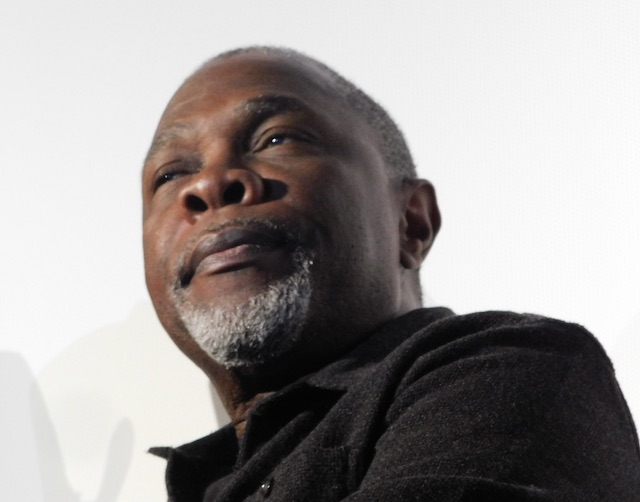
Q: The film also tells a story about gay love especially for that era. It was a taboo and it brought a particular story and aspect of the era. You’ve done a variety of exhibitions of storytelling but what was it like for you to bring out this character who’s iconic, and working with Martin Luther King with a bit of a taboo story of our culture and life.
Colman Domingo: I read an earlier version of the script where it leaned even more into that territory. It struck a fine balance to make sure he was free with his actions. it was such a part of himself because he was a very free person when being sexual. He was liberated long before the word was in our culture. I also think that [we had to show that] was part of him and so was the threat that came along with it — how somebody could use it against him. He was arrested for having sex with two men; that hung over him and threatened to upend his work in this movement in many ways.
I thought it was beautiful how he was depicted and how he was so centered in his sexuality. He’s a little messy at times and that’s cool too, to know that he’s not perfect. It’s not new that he was cruising in bathrooms but it does show his humanity. We show all of it; we don’t leave out that. Many people will want to leave that part out of the story. But it’s so necessary to have all of that. That’s why not only the Tom character has that relationship with him but the Elias character is there.
He is a composite; it shows how Bayard was free but there were many men who weren’t. How do you raise questions about liberating oneself? In hiding oneself you’re destroying yourself — that conversation was important as well. I thought that scene of them breaking up in the park is one of my personal favorites. It’s so painful. you’re watching someone build a jail around himself. That goes on for generations. It goes to how do we get here? We have so much trauma to unpack with ourselves, in our communities with our shame. I think shame is a part of this as well, part of his story.
He was carrying it around; he can only talk to his friend and try to liberate him. In this conversation, we have a great talk about that one conversation which is a part of this. He said why was he not angry at MLK. he’s just trying to wrestle with him. What he’s trying to do is be a sounding board because he knows that this person can hear him; he has depth and he can open up his heart. We needed all of that, all of him. I feel very proud that we have a film like this with someone who is such a great brain and complex human being, a little messy and a little witty.
He loves a cocktail at a party. I feel like we haven’t seen such fullness of our experience on screen. The fullness is not just in the over-sexualization, not just a trope that lives in some other people’s minds; we get the fullness and say, “Hey we do all that.” He can go to the club and can be the smartest person in the room [at the same time].
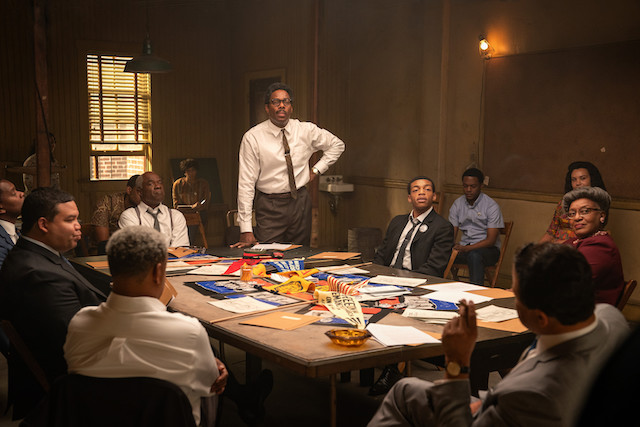
Check out more of Nobuhiro’s articles.
Here’s the trailer of the film.

